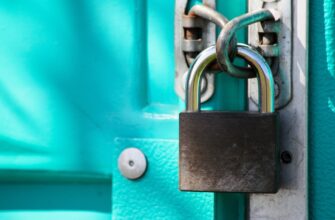“title”: “Best Practices for Protecting Your Ledger: A Comprehensive Guide”,
“content”: “When it comes to safeguarding sensitive data, a ledger—whether digital or physical—requires careful attention. A ledger is a critical record of financial, operational, or personal information, and its security is paramount. This article explores the **best way to protect ledger** through actionable best practices, ensuring your data remains secure from threats like unauthorized access, data breaches, and cyberattacks. Whether you’re managing a business ledger, personal financial records, or a blockchain-based ledger, these strategies will help you implement robust security measures.nn### Understanding the Importance of Ledger SecuritynA ledger is more than just a collection of data; it’s a foundation for trust, compliance, and decision-making. In the digital age, a compromised ledger can lead to financial loss, legal issues, or reputational damage. For example, a business ledger containing customer financial data exposed to hackers could result in identity theft or fraud. Similarly, a personal ledger storing sensitive information like bank details or medical records requires encryption and access controls to prevent unauthorized viewing.nnThe **best way to protect ledger** involves a proactive approach. This includes implementing strong authentication methods, regular audits, and staying updated on emerging threats. By following best practices, you can minimize risks and ensure your ledger remains secure.nn### Key Best Practices for Ledger Protectionn1. **Encryption**: Encrypt sensitive data both at rest and in transit. This ensures that even if a ledger is accessed without authorization, the data remains unreadable. For digital ledgers, use strong encryption protocols like AES-256. For physical ledgers, consider using secure storage solutions with tamper-evident seals.n2. **Access Controls**: Limit access to the ledger to authorized personnel only. Use role-based access controls (RBAC) to ensure that users have only the permissions necessary to perform their tasks. For example, a finance manager might have access to financial data, while a HR employee might only view employee records.n3. **Regular Audits**: Conduct periodic audits to check for vulnerabilities in your ledger system. This includes reviewing access logs, verifying encryption settings, and ensuring compliance with industry standards like GDPR or HIPAA.n4. **Backup and Recovery**: Maintain regular backups of your ledger data. Store backups in secure, offsite locations or use cloud-based solutions with end-to-end encryption. Ensure that recovery processes are tested regularly to prevent data loss in the event of a breach.n5. **Multi-Factor Authentication (MFA)**: Enable MFA for all users who access the ledger. This adds an extra layer of security by requiring users to verify their identity through multiple methods, such as a password and a mobile code.n6. **Employee Training**: Educate employees on security best practices. This includes recognizing phishing attempts, avoiding suspicious links, and reporting security incidents promptly.n7. **Secure Storage**: For physical ledgers, store them in locked cabinets or secure locations. Use anti-tampering measures like security labels or UV markers to detect unauthorized access.nn### Common Ledger Security Threats and How to Mitigate ThemnOne of the most common threats to ledger security is **unauthorized access**. This can occur through weak passwords, unsecured networks, or compromised devices. To mitigate this, enforce strong password policies and use MFA. Another threat is **data breaches**, which can happen if encryption is not properly implemented. Regular audits and encryption checks can help prevent this.nn**Malware** is another significant risk. Malicious software can infiltrate a ledger system and steal data or corrupt files. To combat this, ensure that all devices and software are up to date with the latest security patches. Use antivirus software and avoid downloading files from untrusted sources.nn**Insider threats**—such as employees or contractors with malicious intent—can also compromise a ledger. Mitigate this by implementing strict access controls and conducting background checks for all personnel who handle sensitive data.nn### Implementing a Ledger Security StrategynCreating a comprehensive security strategy for your ledger involves several steps. First, identify the types of data you store and assess the level of risk associated with each. Next, implement the best practices outlined above, such as encryption and access controls. Finally, continuously monitor your ledger system for suspicious activity and update your security measures as needed.nn### FAQ: Frequently Asked Questions About Ledger Securityn**Q: What are the most common ledger security threats?**nA: Common threats include unauthorized access, data breaches, malware, and insider threats. Each of these requires specific countermeasures, such as strong authentication, encryption, and regular audits.nn**Q: How often should I audit my ledger security?**nA: Conduct regular audits at least quarterly. This ensures that your security measures remain effective and up to date with emerging threats.nn**Q: What are the best practices for securing a physical ledger?**nA: For physical ledgers, use secure storage solutions, apply tamper-evident seals, and limit access to authorized individuals. Regularly check for signs of tampering or unauthorized alterations.nn**Q: Can I use cloud services for ledger security?**nA: Yes, but only if the cloud provider offers strong encryption and access controls. Choose a provider with a proven track record in data security and ensure that your data is encrypted both in transit and at rest.nnBy following these best practices, you can significantly reduce the risk of ledger-related security incidents. Remember, security is an ongoing process, and staying proactive is key to protecting your data. Whether you’re managing a digital ledger or a physical one, the **best way to protect ledger** is to combine technical measures with regular monitoring and employee training. With the right strategies in place, your ledger will remain a secure and reliable source of information.”








